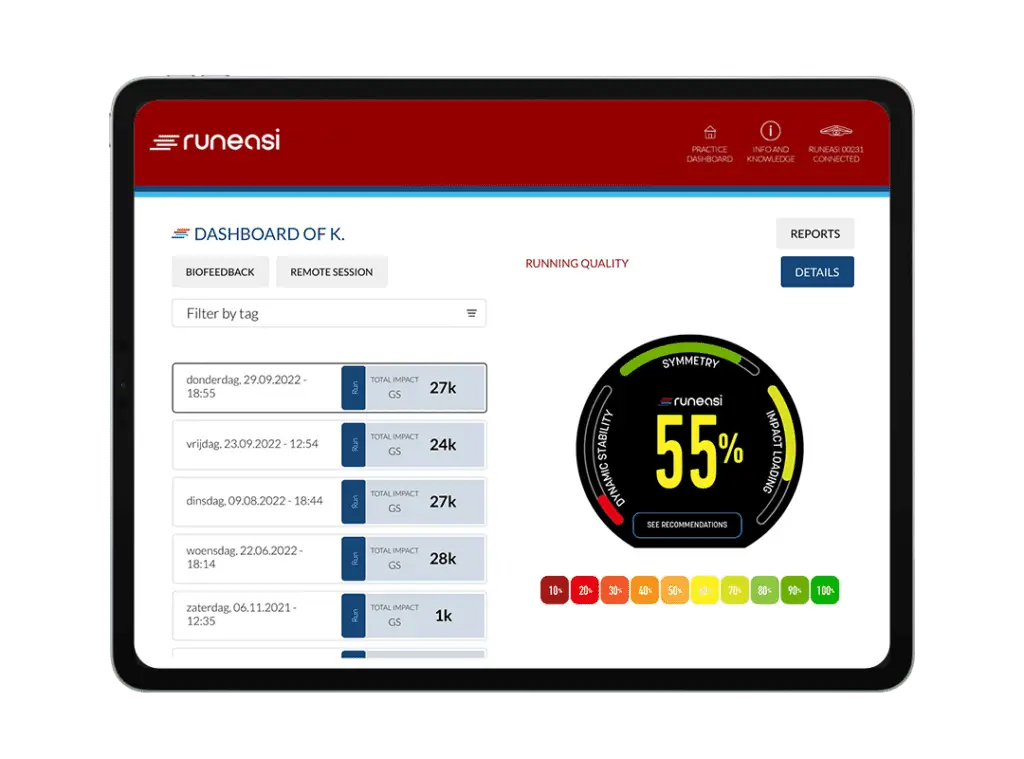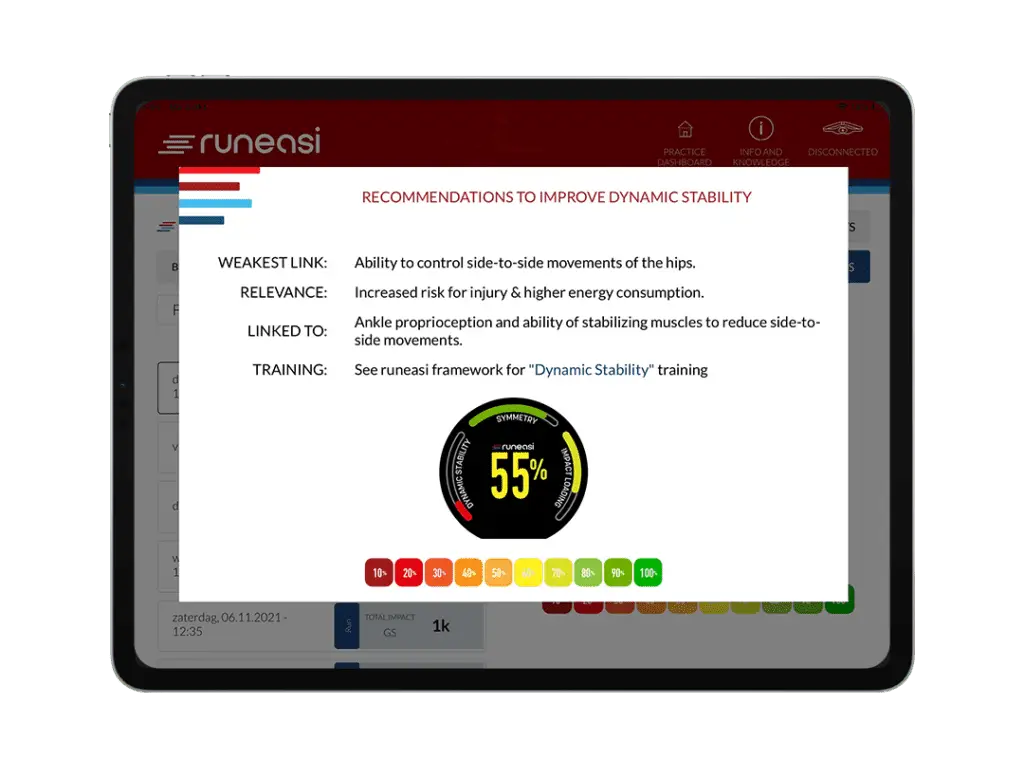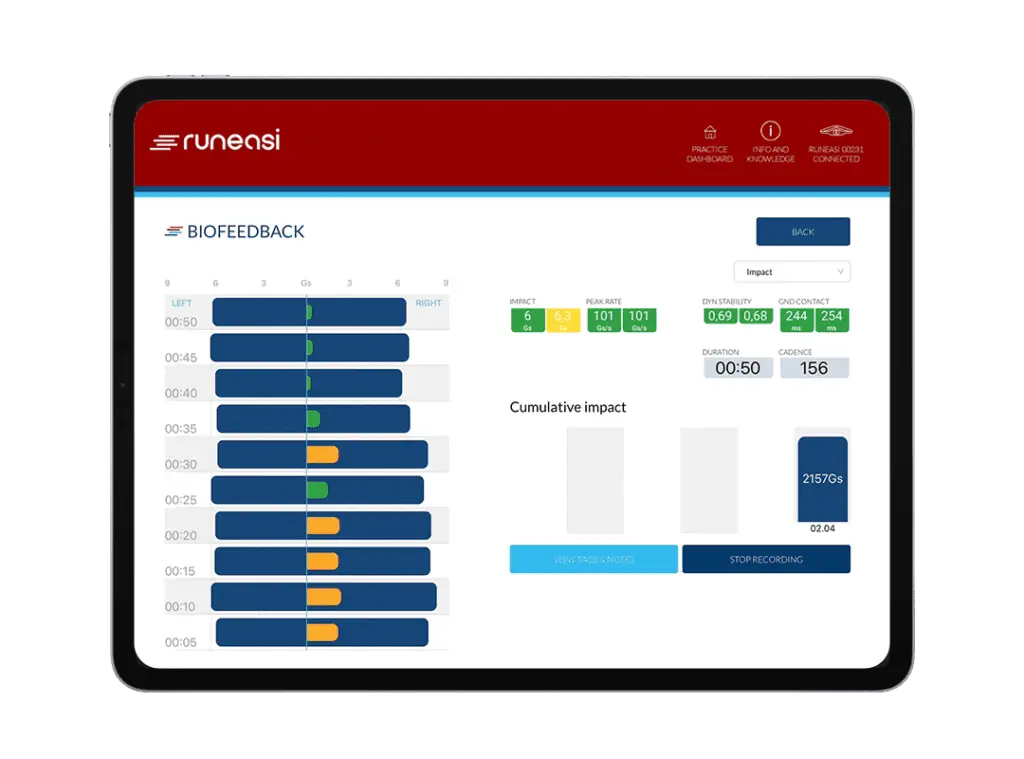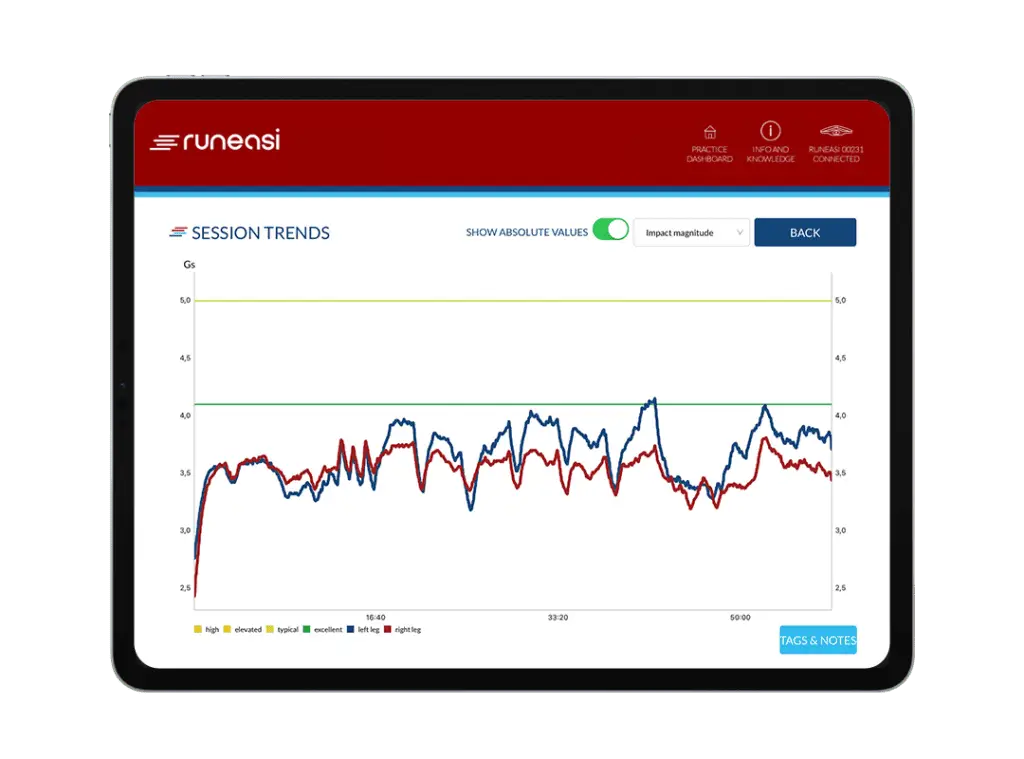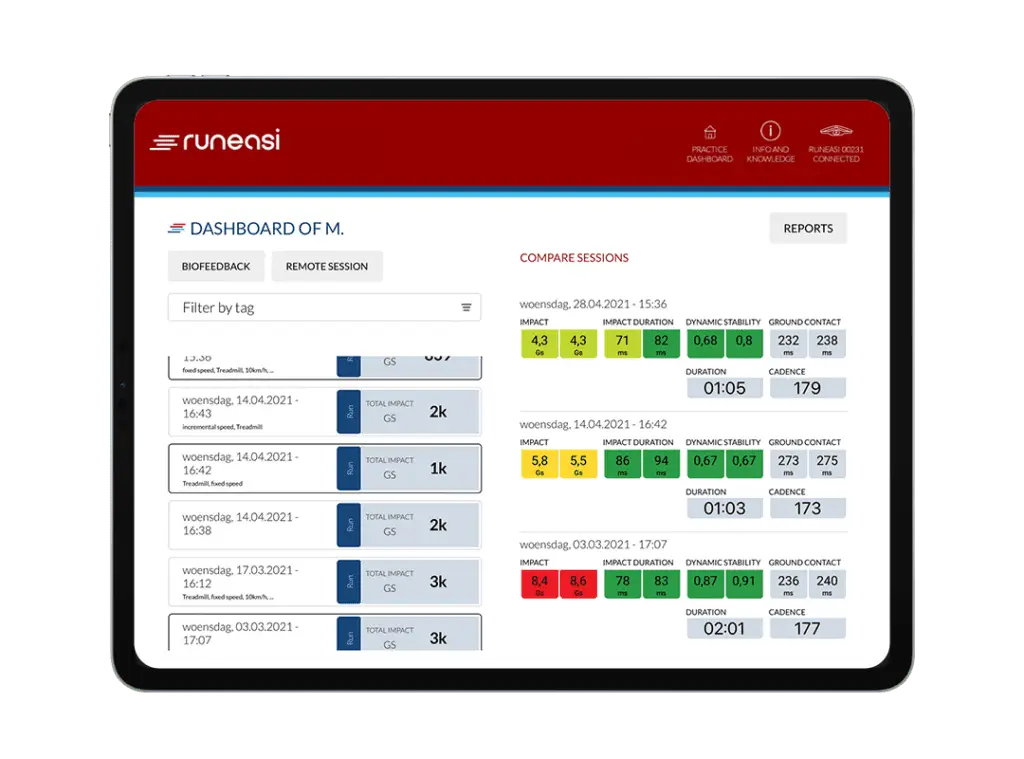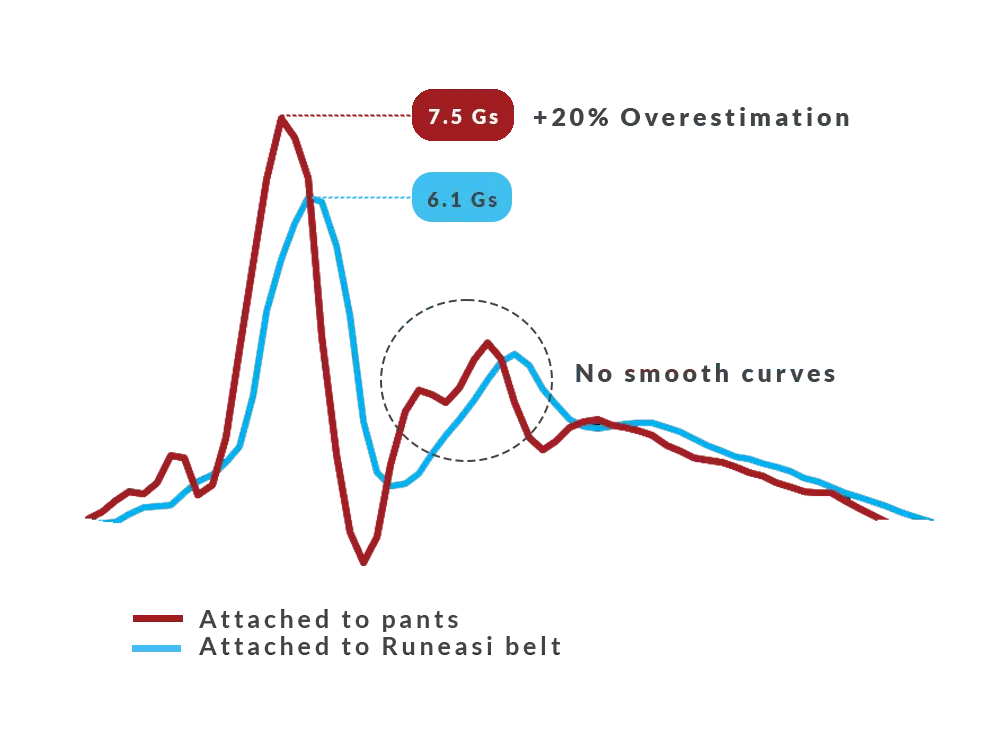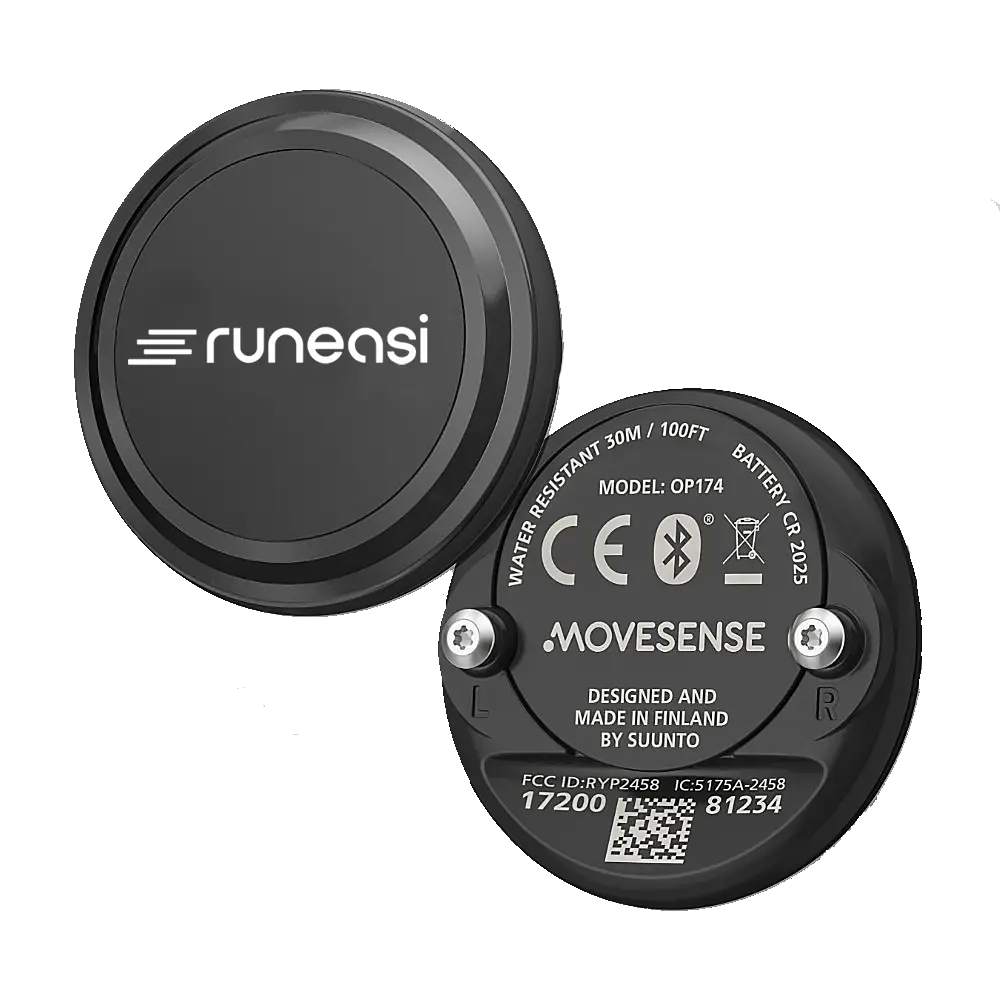Jumping benchmarks for Elite European Ultimate Athletes: Results
By Matthias Gombeer
Ultimate Frisbee is a high-intensity, non-contact team sport that fuses aspects of basketball, soccer, and American football. Known for explosive sprints, rapid directional changes, and gravity-defying layouts, it demands exceptional athleticism. Among these traits, vertical jumping ability stands out as a critical asset. Whether you’re skying for a huck or timing a block at full stretch, the ability to jump higher can make the difference between winning and losing a point.
In this post, we explore the biomechanics behind jump testing in elite Ultimate Frisbee and share insights from Runeasi’s jump data collected at one of Europe’s top competitions.
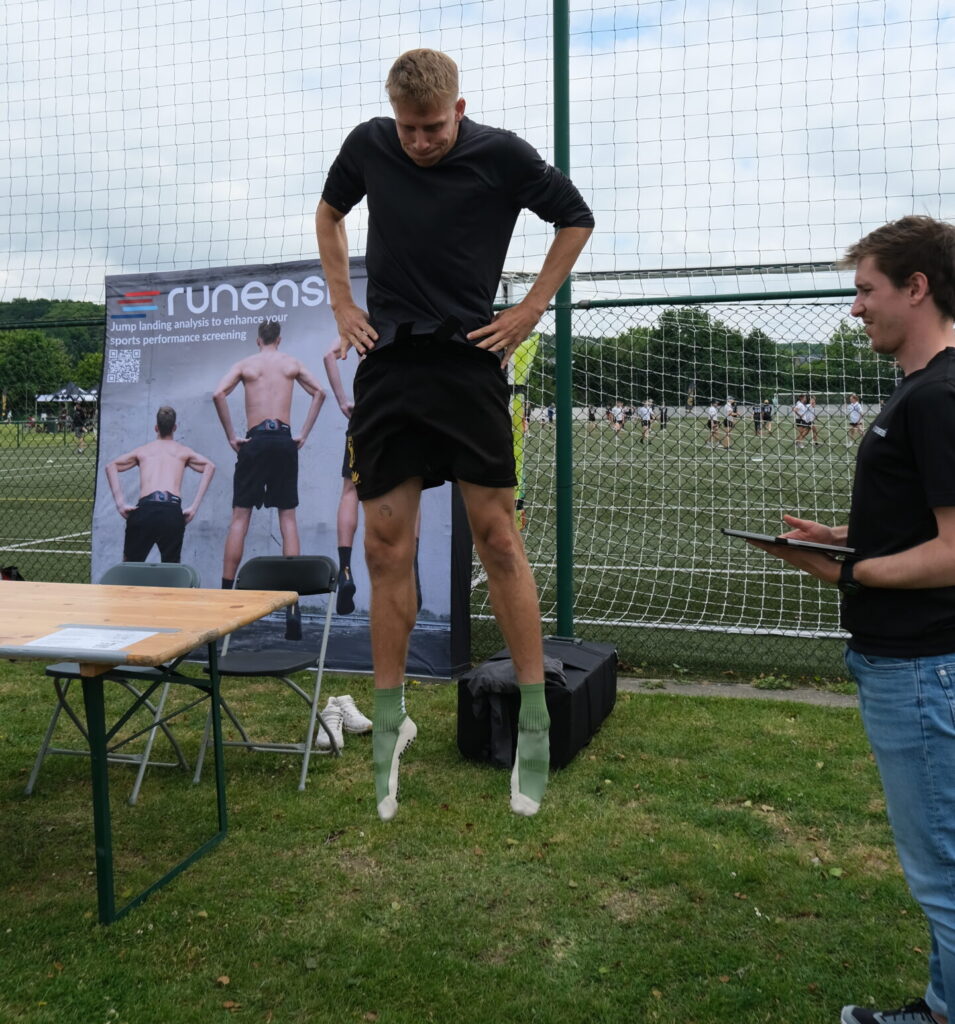
The Importance of Jumping Performance in Ultimate
Vertical jump metrics, such as the Squat Jump (SJ) and Countermovement Jump (CMJ), are widely used in sports science as proxies for leg power, neuromuscular coordination, and injury resilience. Research shows these metrics correlate strongly with sprint speed, agility, and overall athletic potential1, and they are often used to help identify promising talent2. In Ultimate, where the lifetime injury prevalence can approach 100%, lower-limb injuries are particularly common3. These often result from direct contact and typically affect areas like the knee or thigh, leading to contusions. However, there is also a substantial risk of muscle strains and joint sprains, especially under fatigue3.
During tournaments, players frequently face the challenge of competing in up to three 80-minute matches in a single day, significantly increasing fatigue and, in turn, the likelihood of injury. In fact, injuries related to jumping and overuse are reported to be 4.5 times more likely to occur in competition than in training4. This is where vertical performance monitoring becomes essential: studies suggest that athletes with better jumping ability tend to have a lower incidence of injuries5. By tracking jump metrics, coaches and athletes can gain valuable insight into fatigue, recovery, and readiness, ultimately supporting performance and reducing injury risk in high-intensity competition environments.
Pushing the Boundaries of European Ultimate
The United States has long dominated the sport of Ultimate, consistently winning world titles across all three divisions (Men’s, Women’s & Mixed). This success is supported by a professional league and a well-established club infrastructure that fuels high-level competition and athlete development. While Europe is experiencing rapid growth in participation and competitiveness, there remains significant potential for further development. At Runeasi, we’re committed to accelerating the professionalization of Ultimate in Europe. We believe that performance monitoring is a key driver of this progress—providing athletes, coaches, and teams with actionable insights to train smarter, compete harder, and reduce injury risk as the sport continues to evolve on the continent.
We brought our Runeasi Flight Lab (an iPad and a Runeasi sensor belt) to the EUCS Elite Invite in Leuven, where the top 8 European teams in each division competed (Open, Women’s & mixed). Our aim was simple: gather high-quality jump data to benchmark Ultimate’s top European athletes.
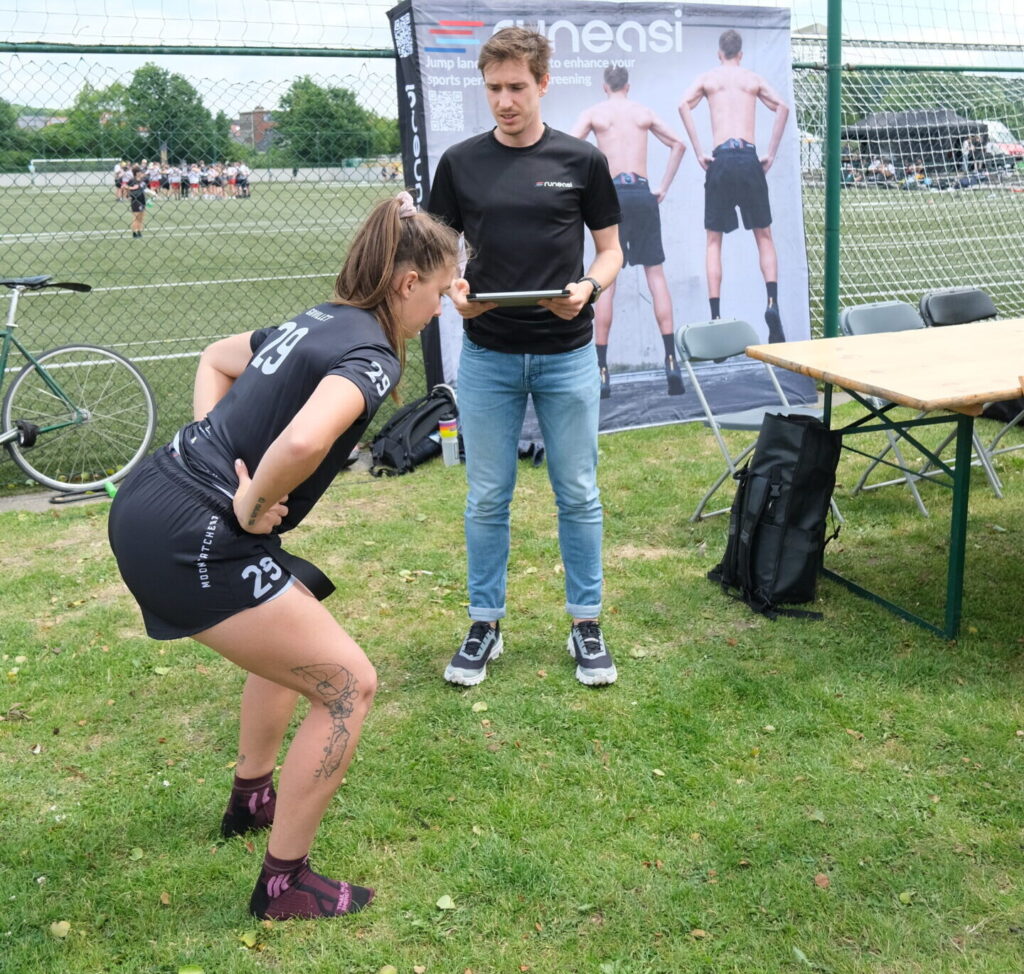
How Do Ultimate Players Compare to Other Sports?
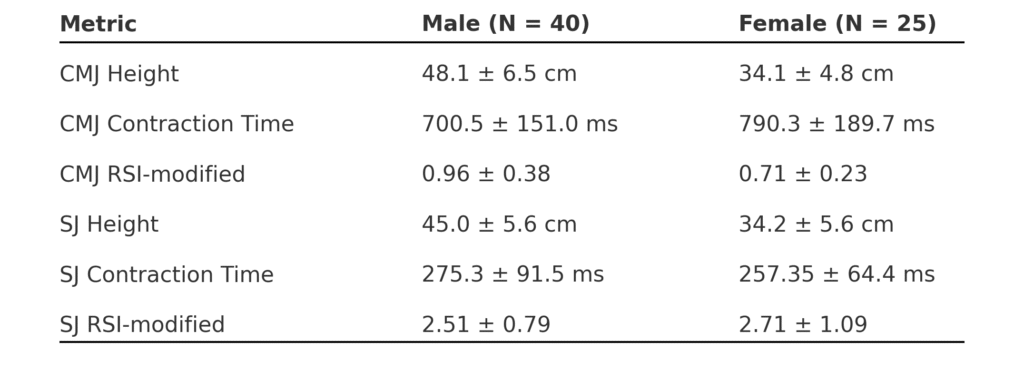
Our findings reveal that male Ultimate players rank among the best in team sports for CMJ height, matching beach volleyball (48.1 cm) and outperforming athletes from indoor volleyball (44.5 cm), handball (42.5 cm), and ice hockey (41.2 cm)6.
Female Ultimate players ranked third behind beach volleyball (35.7 cm) and handball (35.5 cm), but ahead of indoor volleyball (33.0 cm), ice hockey (28.5 cm), and soccer (31.8 cm)6.
Interestingly, when compared to a previous study analyzing Ultimate players by position, with cutters averaging 48 cm and handlers 44 cm, the athletes we tested performed better overall7. While we did not collect positional data during our testing, recent trends in Ultimate suggest that many top players are adopting more hybrid roles, making traditional position-based comparisons less relevant for performance profiling.
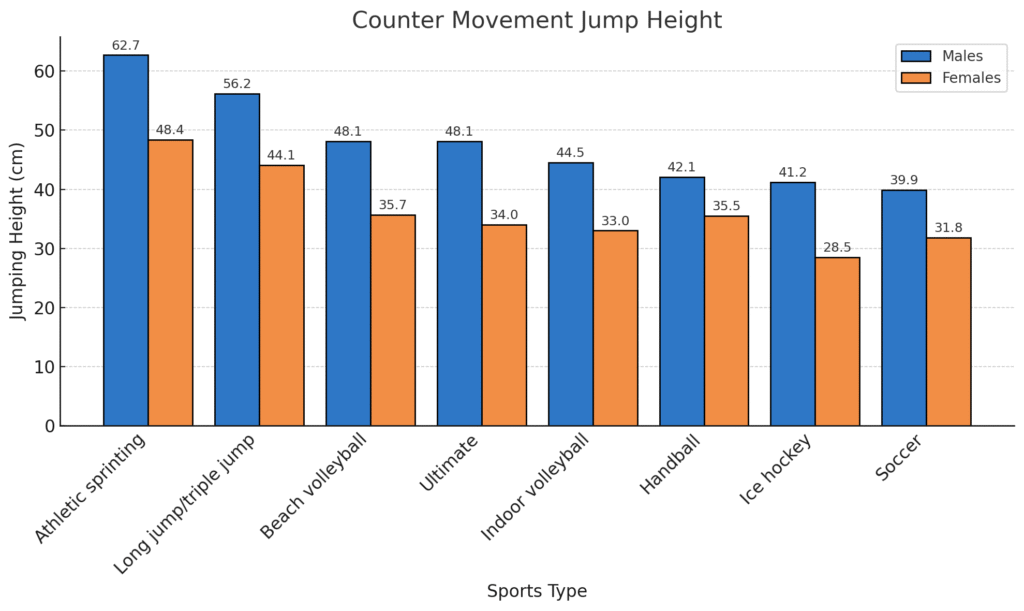
RSI Performance: Explosive Potential
The Reactive Strength Index modified (RSI-mod) is a key measure of an athlete’s explosive capability, calculated as the ratio between Jump height and contraction time during a jump. In high-speed team sports like Ultimate Frisbee, athletes rarely have the luxury of time, they must generate force rapidly to gain a competitive edge. It’s not just about how high you can jump, but how quickly you can reach that height.
This makes RSI-mod especially relevant to Ultimate, where players constantly accelerate, decelerate, and change direction. Research in female handball players has shown a relationship between higher RSI-mod scores for the CMJ and improved deceleration ability, hinting at a broader connection between RSI-mod and overall movement efficiency, a critical factor in Ultimate performance and injury prevention.
In our data, male Ultimate athletes showed an average CMJ RSI-mod of 0.96 ± 0.38, significantly higher than values reported in elite volleyball (0.58 ± 0.13)8 and rugby (0.52 ± 0.05)9 players. Despite similar contraction times (around 700 ms), Ultimate players achieved greater jump heights, meaning they produced more force in the same amount of time, a clear demonstration of superior relative power output.

Conclusion: Ultimate Athletes Rank Among the Best Jumpers in Team Sports
Our analysis confirms that elite Ultimate Frisbee players possess exceptional vertical jumping abilities, placing them among the top performers in team sports globally. As the sport continues to evolve and professionalize, monitoring key metrics like RSI-mod Squat Jump (SJ), and Countermovement Jump (CMJ) will be essential for enhancing performance, preventing injuries, and guiding long-term athletic development.
At Runeasi, we’re committed to continuing our work on jumping, with not just ultimate frisbee, but also other team sports. We aim to organize screenings and build comprehensive benchmarks across sports and age groups, including U18, U20, U23, and adult divisions, enabling us to track maturation trends and identify elite talent as it progresses through the ranks.
We’re proud to support the next generation of athletes in taking flight — quite literally.
Want to Use Runeasi with Your Own Team?
Whether you’re a physiotherapist, coach, or performance lead at a local club, Runeasi can help you screen and monitor your athletes efficiently. All you need is an iPad, a Runeasi belt and sensor, and optionally, a leaderboard to boost the competitive spirit.
Testing is quick and straightforward. Within minutes, each athlete can perform:
- Explosiveness Test: 3 Squat Jumps (SJ) + 3 Countermovement Jumps (CMJ)
- Reactivity Test: 10 seconds of two-legged hopping, followed by 10 seconds each on the right and left leg
After testing, you can instantly generate and share personalized performance reports with each athlete. This allows for easy and repeatable team-wide screening, whether you’re testing weekly, monthly, or just a couple of times per year.
At Runeasi, we’re not only advancing elite sport. We’re making cutting-edge biomechanics accessible for every team, at every level.
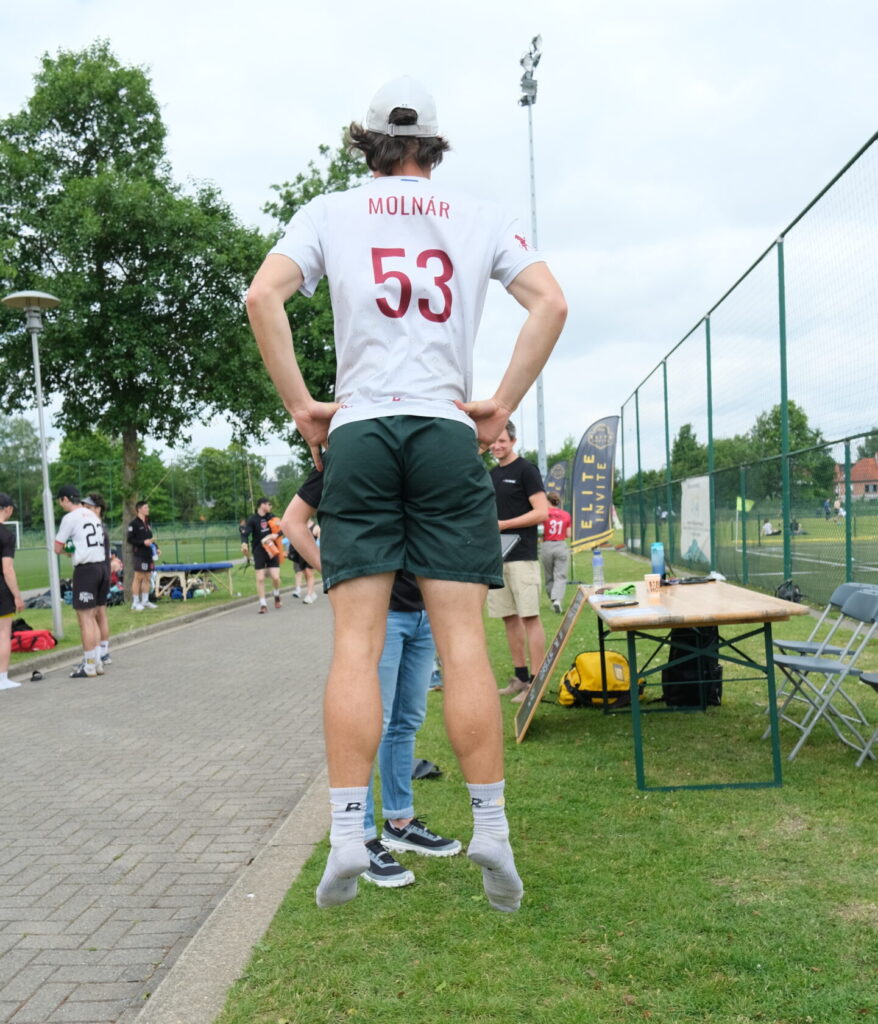
🙏 Thank you to the organizers, athletes, and volunteers who helped us run over 50 screenings in one day. This was a strong first step toward a more evidence-based future for ultimate.
References:
- Köklü, Yusuf & Alemdaroğlu, Utku & Özkan, Ali & Koz, Mitat & Ersoz, Gulfem. (2014). The relationship between sprint ability, agility and vertical jump performance in young soccer players. Science & Sports. 30. 10.1016/j.scispo.2013.04.006.
- Kite, Rich & Buscombe, Richard & Bourne, Nicholas. (2020). Talent detection: do jumping performances correlate with maturation levels, and what are the differences within maturation groupings?. 9-13.
- Fajardo Pulido, D., & Lystad, R. P. (2020). Epidemiology of Injuries in Ultimate (Frisbee): A Systematic Review. Sports (Basel, Switzerland), 8(12), 168. https://doi.org/10.3390/sports8120168
- Hess, M. C., Swedler, D. I., Collins, C. S., Ponce, B. A., & Brabston, E. W. (2020). Descriptive Epidemiology of Injuries in Professional Ultimate Frisbee Athletes. Journal of athletic training, 55(2), 195–204. https://doi.org/10.4085/1062-6050-269-18
- Fort-Vanmeerhaeghe, A., Milà-Villarroel, R., Pujol-Marzo, M., Arboix-Alió, J., & Bishop, C. (2022). Higher Vertical Jumping Asymmetries and Lower Physical Performance are Indicators of Increased Injury Incidence in Youth Team-Sport Athletes. Journal of strength and conditioning research, 36(8), 2204–2211. https://doi.org/10.1519/JSC.0000000000003828
- Haugen, T. A., Breitschädel, F., Wiig, H., & Seiler, S. (2021). Countermovement Jump Height in National-Team Athletes of Various Sports: A Framework for Practitioners and Scientists. International journal of sports physiology and performance, 16(2), 184–189. https://doi.org/10.1123/ijspp.2019-0964
- Ismail, Zulkifli and Ismail, Anis Syaimaa Husna and Mohd Salleh, Asrul and Jamaludin, Masshera and Abu Talip, Nur Khairunisa and Md Razali, Mohd Rizal (2022) Anthropometric variables and vertical jump in male frisbee players due to game’s position / Zulkifli Ismail … [et al.]. Gading Journal of Science and Technology, 5 (1): 10. pp. 77-84. ISSN 2637-0018
- Pleša, J., Kozinc, Ž., Smajla, D., & Šarabon, N. (2022). The association between reactive strength index and reactive strength index modified with approach jump performance. PloS one, 17(2), e0264144. https://doi.org/10.1371/journal.pone.0264144
- https://www.sportsmith.co/reviews/march-2022/countermovement-jump-reactive-strength-index/
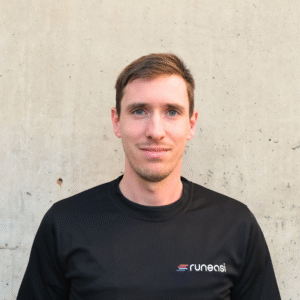
Blog by Matthias Gombeer
Matthias completed his master’s degree in Movement Sciences, specializing in biomechanics, at KU Leuven. After graduating, he gained experience with the Sports Science team at On Running. As a sub-elite and passionate runner himself, Matthias brings both scientific knowledge and personal insight to his role. At Runeasi, he works as the dedicated sport scientist, focusing on athlete monitoring and translating biomechanical data into practical insights. He supports coaches and athletes with load monitoring, shoe recommendations, and performance optimization through evidence-based approaches.

